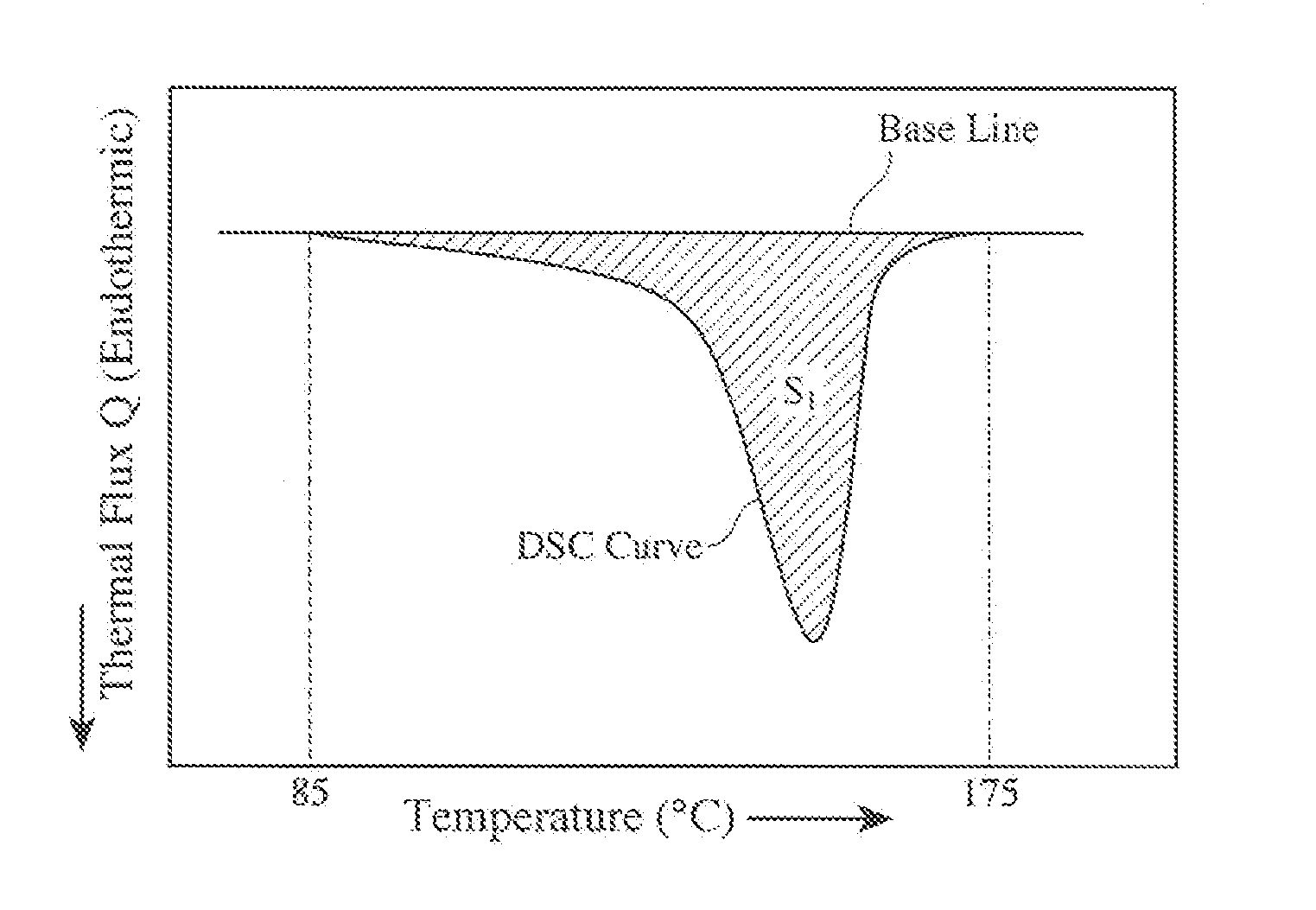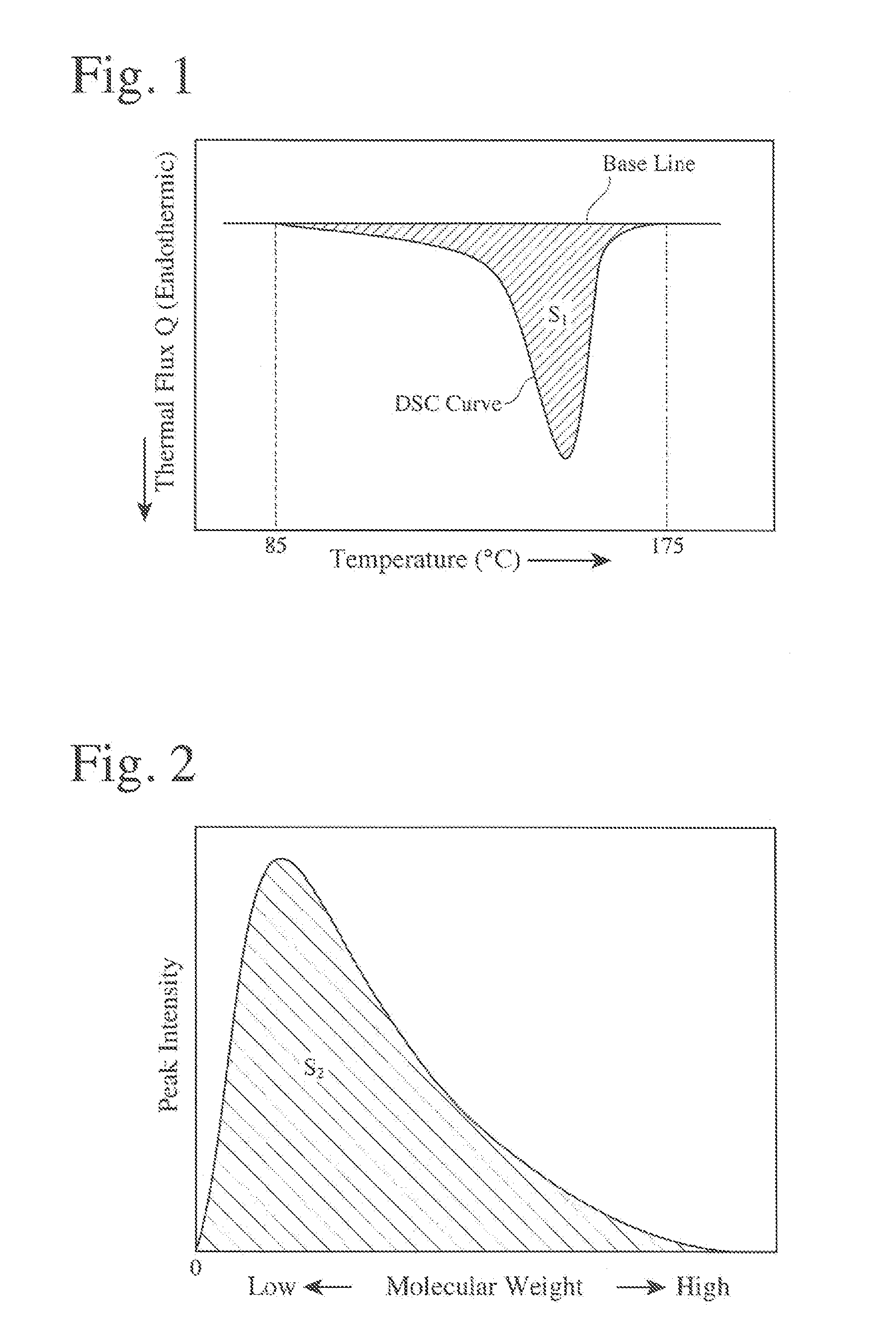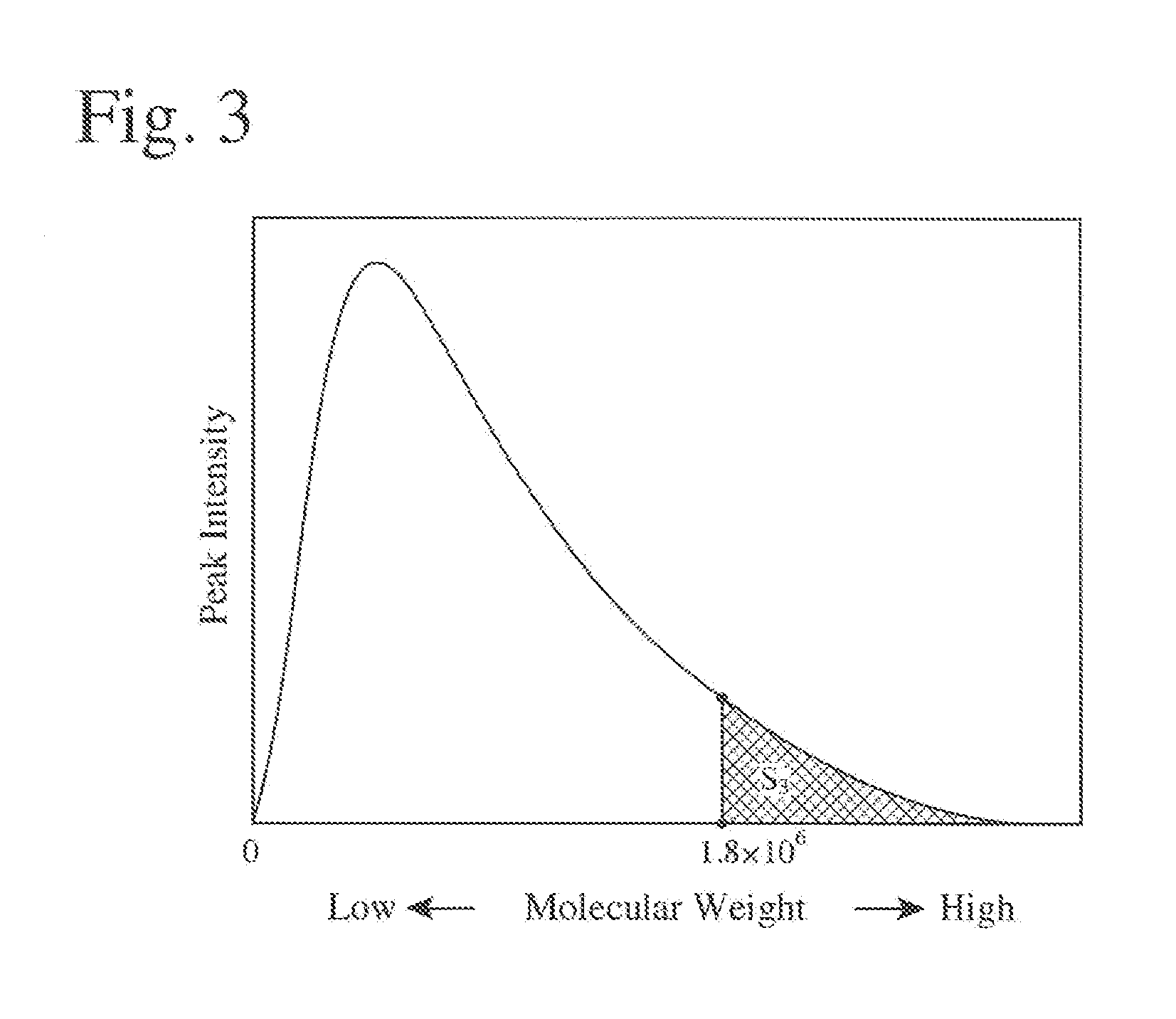Microporous polyolefin membrane, its production method, and battery separator
a technology of microporous polyolefin and polypropylene, which is applied in the direction of membranes, electric/magnetic/electromagnetic heating, and explosives, can solve the problems of poor mechanical strength, high shutdown temperature of microporous membranes composed only of polypropylene, and affecting the performance of microporous membranes, etc., to achieve well-balanced permeability, mechanical properties and meltdown properties
- Summary
- Abstract
- Description
- Claims
- Application Information
AI Technical Summary
Benefits of technology
Problems solved by technology
Method used
Image
Examples
example 1
[0099] 100 parts by mass of a polyolefin composition comprising 1% by mass of ultra-high-molecular-weight polyethylene (UHMWPE) having a weight-average molecular weight (Mw) of 2.5×106, 49% by mass of high-density polyethylene (HDPE) having Mw of 3.0×105, and 50% by mass of a propylene homopolymer (PP) having Mw of 2.69×106, Mw / Mn of 3.5, and a heat of fusion of 99.9 J / g, a fraction having a molecular weight of 1.8×106 or more being 57.2% by mass per PP), and 1.0 parts by mass of tetrakis[methylene-3-(3,5-ditertiary-butyl-4-hydroxyphenyl)-propionate]methane as an antioxidant were dry-blended to form a polyolefin composition. Measurement revealed that a polyethylene composition of UHMWPE and HDPE had a melting point of 135° C., and a crystal dispersion temperature of 90° C.
[0100] The Mw and Mw / Mn of UHMWPE and HDPE were measured by a gel permeation chromatography (GPC) method under the following conditions. [0101] Measurement apparatus: GPC-150C available from Waters Corporation, [0...
example 2
[0124] A microporous polyolefin membrane was produced in the same manner as in Example 1, except for using, as the polypropylene, a propylene homopolymer having Mw of 1.82×106, Mw / Mn of 2.6, and a heat of fusion of 107.2 J / g, a fraction having a molecular weight of 1.8×106 or more being 34.9% by mass of the propylene homopolymer.
example 3
[0125] A microporous polyolefin membrane was produced in the same manner as in Example 1, except for using, as the polypropylene, a propylene homopolymer having Mw of 1.40×106, Mw / Mn of 2.6, and a heat of fusion of 111.6 J / g, a fraction having a molecular weight of 1.8×106 or more being 25.3% by mass of the propylene homopolymer.
PUM
| Property | Measurement | Unit |
|---|---|---|
| Fraction | aaaaa | aaaaa |
| Nuclear radiation | aaaaa | aaaaa |
| Temperature | aaaaa | aaaaa |
Abstract
Description
Claims
Application Information
 Login to View More
Login to View More - R&D
- Intellectual Property
- Life Sciences
- Materials
- Tech Scout
- Unparalleled Data Quality
- Higher Quality Content
- 60% Fewer Hallucinations
Browse by: Latest US Patents, China's latest patents, Technical Efficacy Thesaurus, Application Domain, Technology Topic, Popular Technical Reports.
© 2025 PatSnap. All rights reserved.Legal|Privacy policy|Modern Slavery Act Transparency Statement|Sitemap|About US| Contact US: help@patsnap.com



